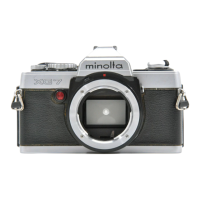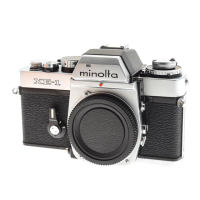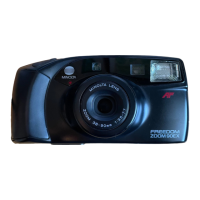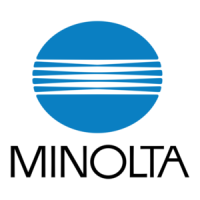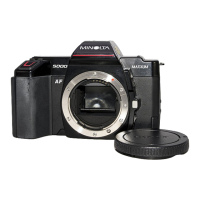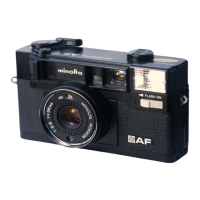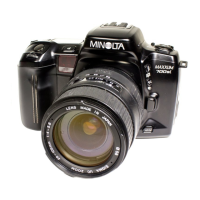ment, you can usually make the repair
without pulling the mirror cage.
Earlier, we mentioned that the air
piston on the side of the mirror cage pro
vides the memory time lag. The air piston
actually releases the mirror. When the
mirror-release magnet disengages the
mirror-release lever. Fig. 106, the spring-
driven piston moves down. The piston
then disengages the mirror-lifting lever.
You can adjust the memory time lag by
turning the setscrew at the top of the air
cylinder, Fig. 107; you don't even have to
remove the mirror cage to reach the ad
justment. Turning down the setscrew in
creases the pressure of the spring inside
the cylinder. The spring then drives down
the piston more quickly, resulting in a
shorter delay between the closing of the
release switch and the opening of the
memory switch.
The time delay assures that the dia
phragm reaches the taking aperture
before the memory switch opens. Minolta
specifies a 56ms delay between the two
switching actions. Too short a memory
time lag results in inaccurate exposures;
the memory switch opens before the
diaphragm has time to reach the selected
aperture.
You may never have to adjust the
memory time lag. But, in some situations,
you may be able to trace the problem to
the air cylinder. For example, if the owner
shoots pictures at high altitudes, the
decreased air pressure within the cylinder
ADJUSTM ENT
SETSCREW
TENSIONING-LEVER
LATCH
Figure 106
Figure 107
Figure 108
Figure 109 Mirror charged
AIR CYLINDER
SCREWS
HOLDING
AIR
CYLINDER
DIAPHRAGM-
CLOSING
LEVER
Figure 110 Mirror up
Figure 111

